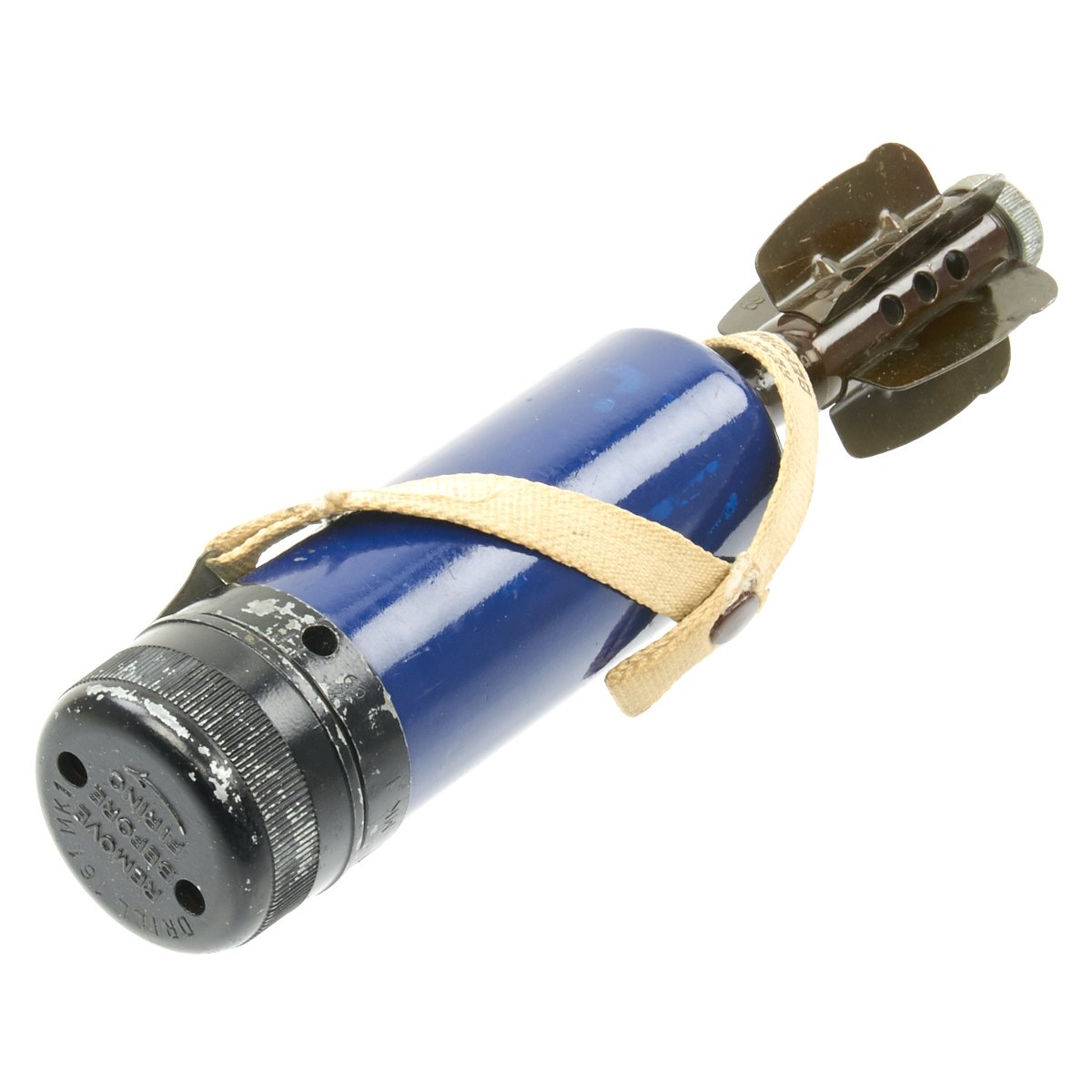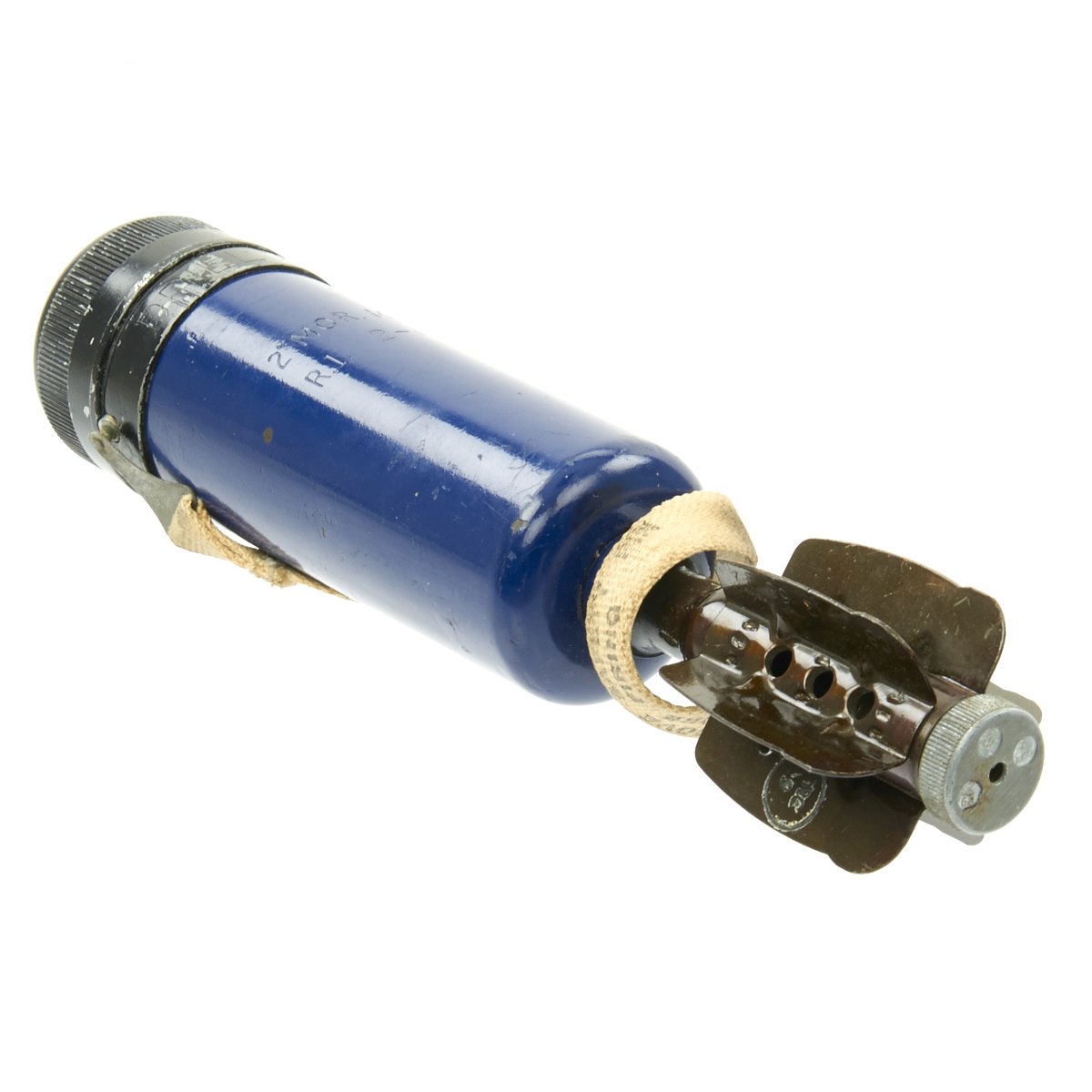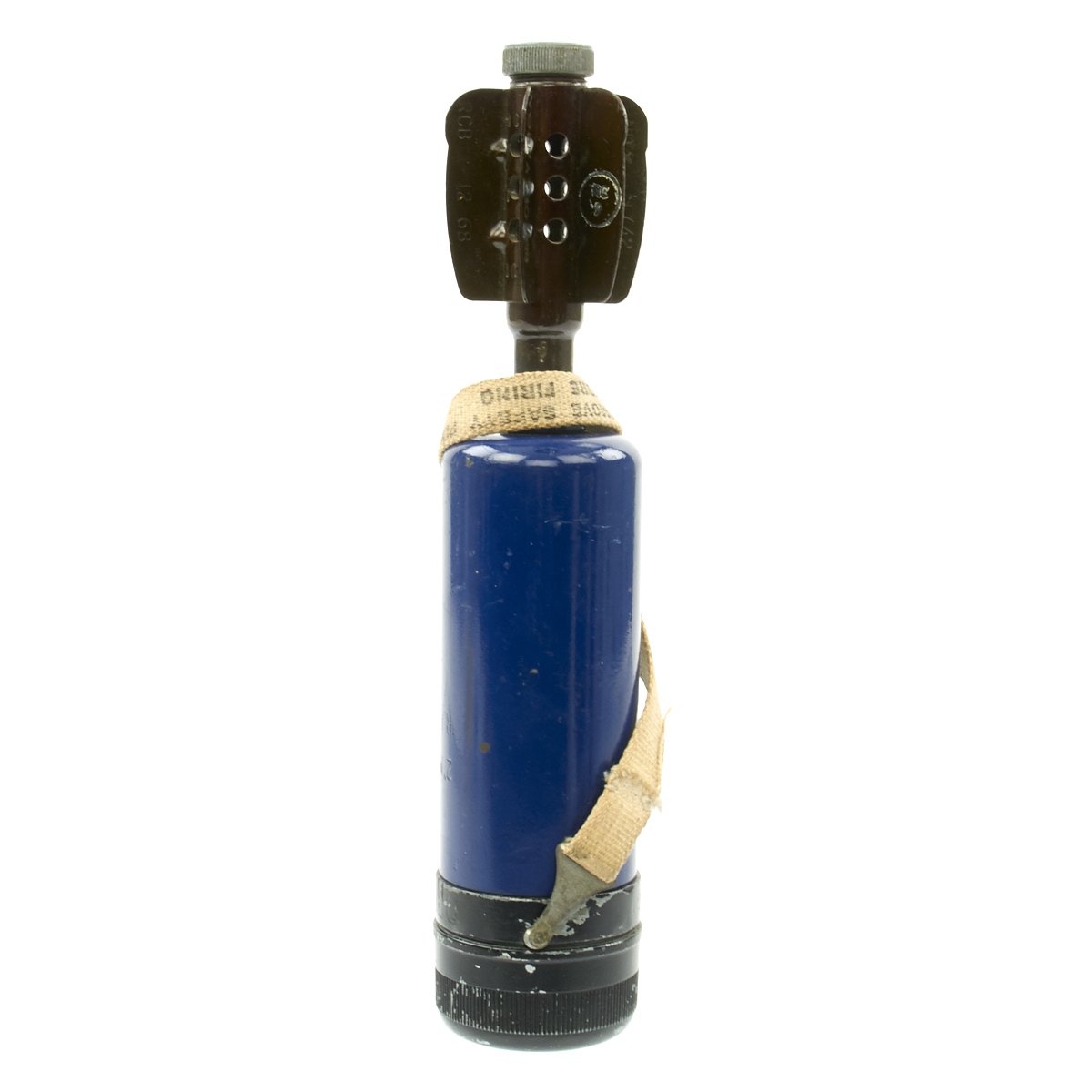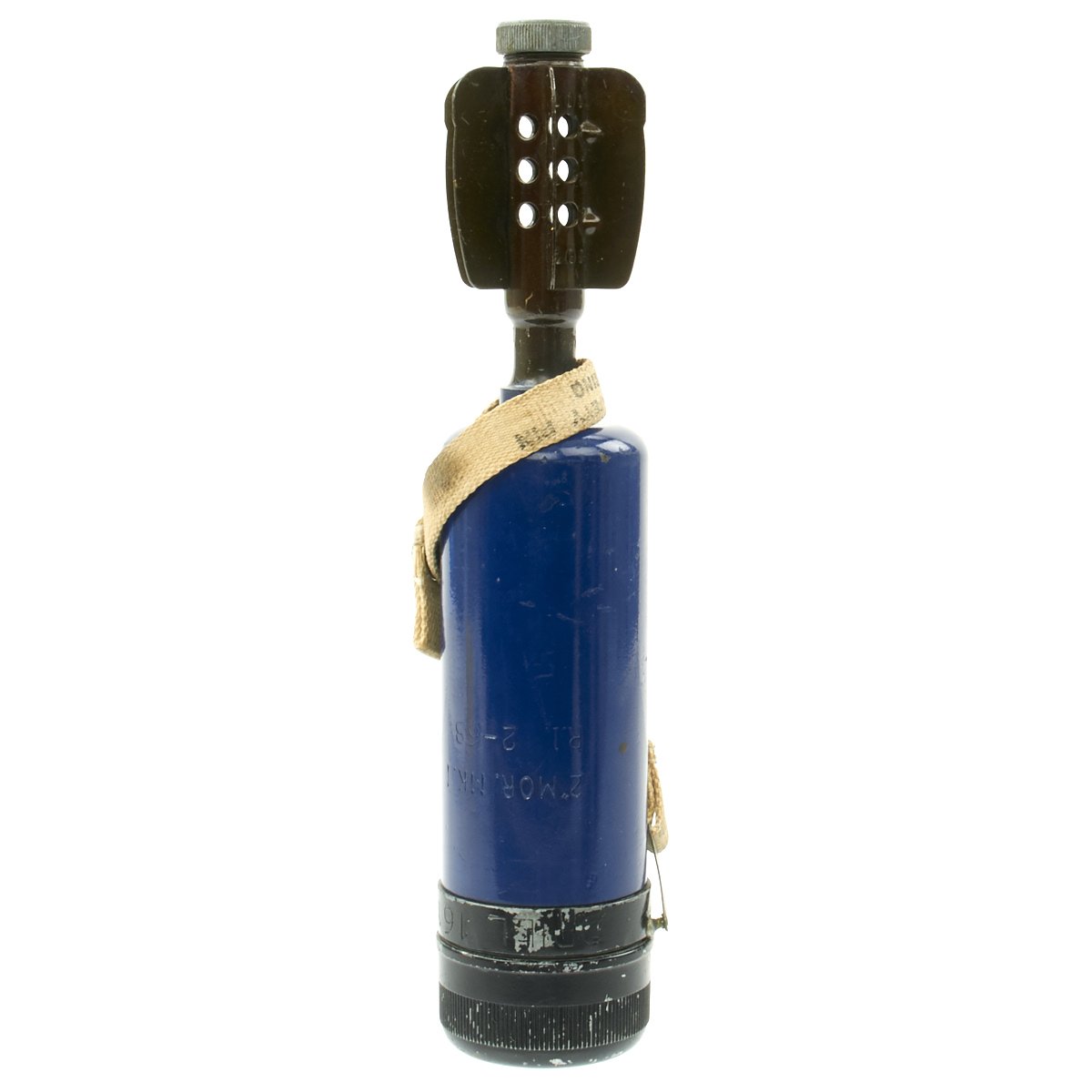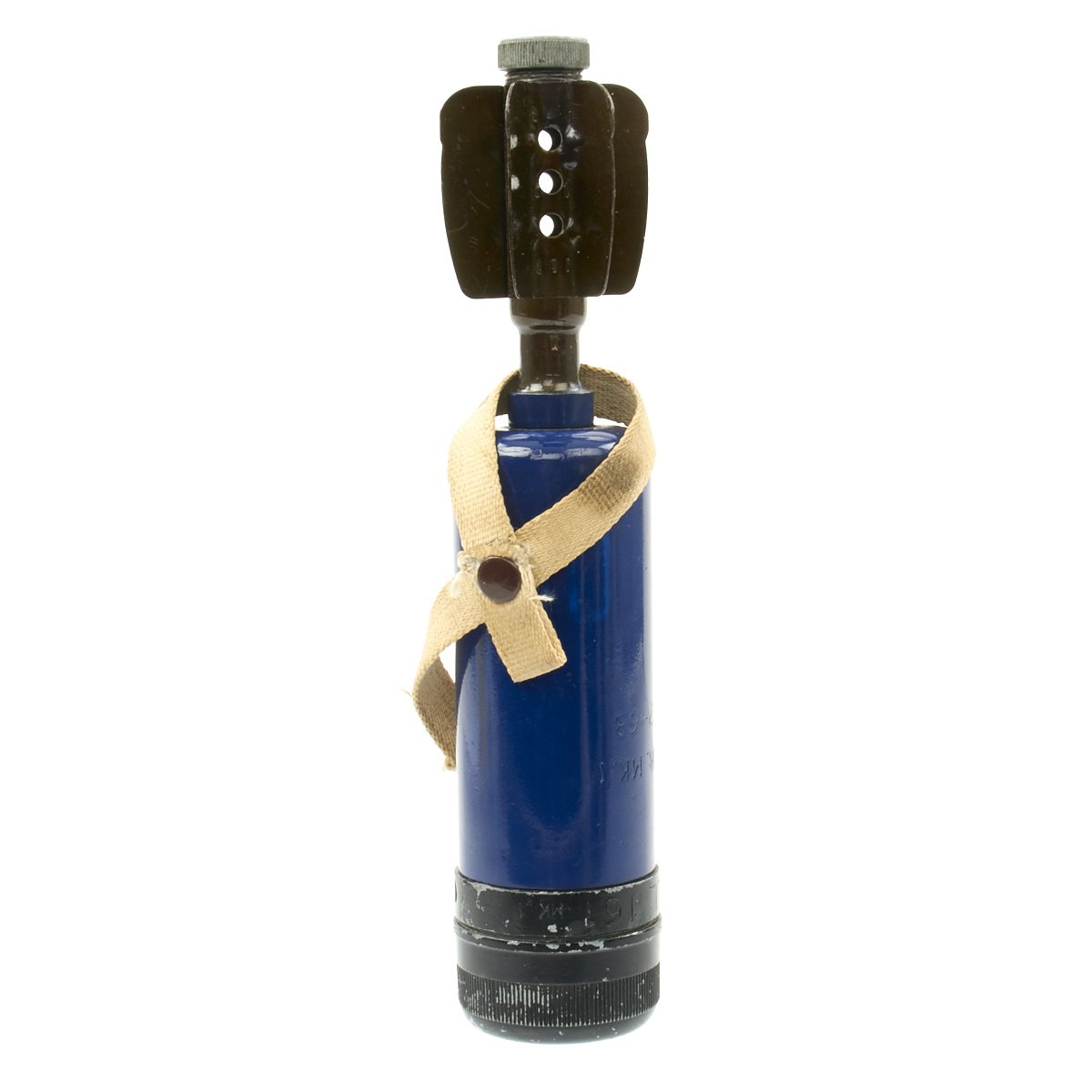Original British Ordnance SBML Two-Inch Mortar Inert Drill Round 161 MkI – dated 1968/9 Original Items
$ 395,00 $ 118,50
Original Item: Only One Available. Totally inert per guidelines provided by the Bureau of Alcohol Tobacco and Firearms (ATF) this is a nice post war example of a 161 MkI Drill Round for the British British Ordnance SBML Two-Inch Mortar. While never a live round, it did have propellant, which was removed, making this totally inert, and unable to be converted into an explosive device.
This example is in very good condition, and still has the original flat safety cord marked “REMOVE SAFETY PIN BEFORE FIRING”. The top screws off, allowing the safety pin to be removed, and it disassembles further for inspection. The top of the cap is marked:
DRILL 161 MK1
REMOVE
BEFORE
FIRING
The side of the main housing is marked:
2″ MOR. MK. I
R. I. 2 – 63
It is also marked on the side with DRILL 161 MKI BN69 just under the cap, and a large painted DRILL can be seen through the blue paint. The are other markings stamped on the various components, making this a very nice display piece.
More on the 2-Inch Mortar:
The ordnance SBML two-inch mortar, or more commonly, the “two-inch mortar”, was a British mortar issued to the British Army and the Commonwealth armies, that saw use during the Second World War and later. It was more portable than larger mortars, and the two-inch (51mm) had greater range and firepower than rifle grenades
The standard service version of the 2-inch (51 mm) mortar had a barrel length of 21 inches (530 mm) and could fire a high explosive bomb weighing 2.25 lb (1.02 kg) out to a range of 500 yards. With such a short barrel the normal firing method, where the bomb was dropped down the tube and a pin in the base of the barrel struck the detonator in the tail of the bomb, would not work so firing was by a small trigger mechanism at the breech. Originally the two-inch mortar was fitted with a large collimating sight with elevating and cross-level bubbles, but this was soon dropped as unnecessary for front-line use. It was replaced with a simple white line painted up the length of the barrel. The firer only had to line this up in the direction of the target and fire a number of bombs for effect. While this method of operation appeared rather haphazard, it worked well and the practice continued long after the war. The mortar evolved in other directions too, with the original large base plate being replaced by a simple curved model, to give it a combat weight of 10.25 lb (4.65 kg). Due to its small size, and for simplicity, the mortar had no forward strut or bipod that most larger designs needed. The barrel was held at the correct angle by one soldier while the other loaded and fired the round. It could achieve a firing rate of some eight rounds per minute. The bombs were cylindrical with a perforated four-finned tail. For the HE projectiles an impact fuze was fitted in the nose of the bomb. The illuminating round weighed 1 lb (0.45 kg) and the smoke round weighed 2.25 lb (1.02 kg). A whole range of other ammunition was also developed, including a specialized bomb that cast a lightweight explosive-filled net over minefields which could be detonated, clearing a path.
Variants of the weapon itself included the Mk VII* with a shortened barrel, for use by airborne units, the Mk VII for use in Universal Carriers and the Mk III used as a smoke discharger in tanks.
Post war, the two-inch mortar was kept in service to fire smoke and illuminating rounds. It remained in service until the late 1980s when it was replaced by the L9A1 51 mm light mortar.
Fast Shipping with Professional Packaging
Thanks to our longstanding association with UPS FedEx DHL, and other major international carriers, we are able to provide a range of shipping options. Our warehouse staff is expertly trained and will wrap your products according to our exact and precise specifications. Prior to shipping, your goods will be thoroughly examined and securely secured. We ship to thousands clients each day across multiple countries. This shows how we're dedicated to be the largest retailer on the internet. Warehouses and distribution centres can be located throughout Europe as well as the USA.
Note: Orders with more than one item will be assigned a processing date depending on the item.
Before shipping before shipping, we'll conduct a thorough inspection of the items you have ordered. Today, the majority of orders will be delivered within 48 hours. The delivery time will be between 3-7 days.
Returns
The stock is dynamic and we cannot completely manage it because multiple stakeholders are involved, including our factory and warehouse. So the actual stock may alter at any time. It's possible that you may not receive your order once the order has been made.
Our policy is valid for a period of 30 days. If you don't receive the product within 30 days, we are not able to issue a refund or an exchange.
You can only return an item if it is unused and in the same state as the day you received it. You must have the item in its original packaging.
Related products
Uncategorized
Uncategorized
Uncategorized
Uncategorized
Uncategorized
Uncategorized
Uncategorized
Uncategorized
Uncategorized
Uncategorized
Uncategorized
Uncategorized
Uncategorized
Uncategorized
Uncategorized
Uncategorized
